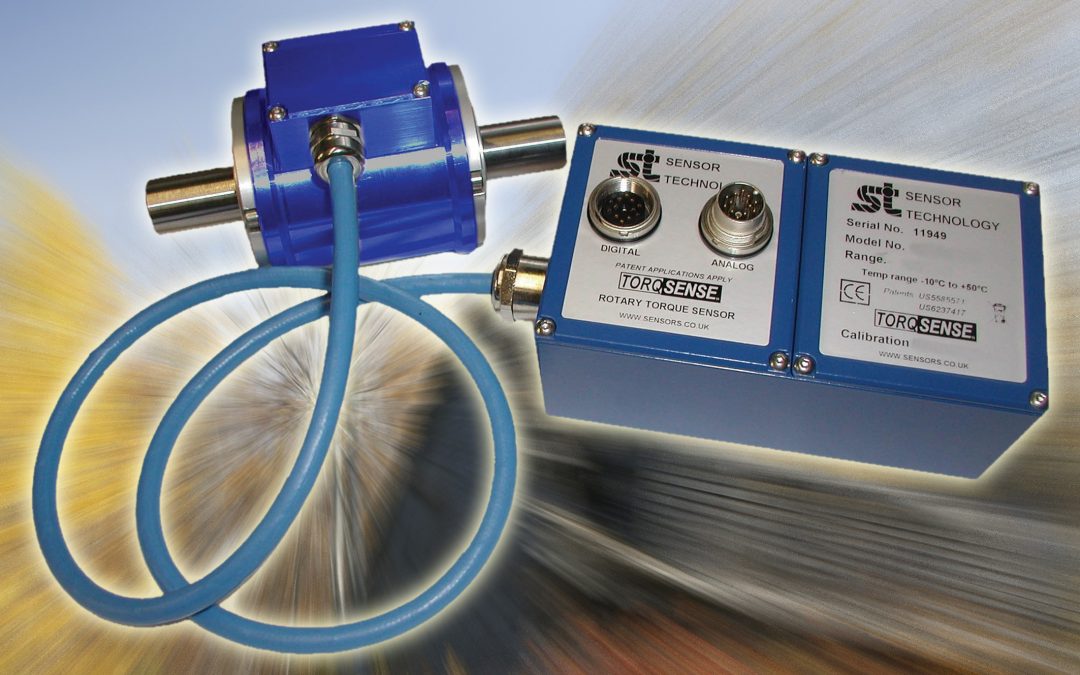Oxford YASA Motors, a company created to commercialise the revolutionary YASA motor developed by Oxford University’s Energy and Power Group, is finding that a TorqSense non-contact speed and torque sensor from Sensor Technology is an invaluable aid in the refinement of its world-leading motor designs. Used in a test rig to evaluate prototype motors, the sensor provides accurate and dependable real time information in a readily accessible format.
Oxford YASA Motors is engaged in the development and manufacture of a new type of axial flux motor that features Yokeless And Segmented Armature (YASA) topology. Compared with conventional axial flux motors, the new YASA types offer a step-change improvement in torque density, making them ideal for applications such as electric vehicles where the highest possible torque-to-weight ratio is a key requirement.
The YASA topology is based around a series of magnetically separated segments that form the stator of the machine. The step-change improvement in the specific torque of the motor, which at around 20 Nm/kg is at least twice that of the best currently available alternatives, results from a combination of patented improvements in the magnetics, cooling and packaging of the motor.
A 500 Nm YASA motor has already been developed specifically for use in electric and hybrid vehicles. This motor is compact – just 340 mm in diameter and 70 mm wide – and is, therefore, able to fit easily within the space that would normally be occupied by the front or rear differential in typical vehicle. With the YASA motors, no differential is needed.
Since these motors have an output of 500 Nm per “slice”, and a peak power of around 75 kW, two of them provide sufficient power for most vehicles. This has been verified in practice by the Westfield iRacer, a pioneering electric racing car fitted with two YASA motors, which accelerates from 0 to 60 mph in less than five seconds, and is capable of reaching an electronically limited top speed of 110 mph.
Despite the impressive performance and versatility of its existing products, Oxford YASA Motors is committed to continually refining and improving its designs. In addition, the company offers a custom design and manufacturing service for motors to suit applications that are not yet covered by its standard product range. All of this means that it has a regular requirement to analyse the performance of prototype motors.
An essential element of this work is accurate measurement of torque and speed of the motors during an extensive programme of testing. The tests often involve linking a pair of motors back-to-back, with one driving and the other acting as a brake. While conventional torque sensors based on strain gauges could have been used in this application, this would have unnecessarily complicated the design of the test rig and, in addition, such sensors have a poor reputation for accuracy and reliability.
Accordingly, the development team at Oxford YASA Motors looked for a better alternative, which it found in the form of TorqSense non-contact wireless torque sensors from Sensor Technology. Based on surface acoustic wave (SAW) technology, these novel sensors essentially comprise two thin metal electrodes, which take the form of interlocking fingers on a piezoelectric substrate. When a radio frequency signal of the correct frequency is applied to this assembly, surface acoustic waves are set up and it acts as a resonant circuit.
If the substrate is deformed, however, the resonant frequency of the assembly changes. This means that if the assembly is attached to, for example, a motor shaft it can be used to measure the deformation in that shaft as the torque transmitted by the shaft changes. In other words, the assembly becomes a frequency-dependent strain gauge that measures torque.
As the assembly operates at radio frequency it requires no wired connections – signals to and from it can easily be coupled wirelessly. As a result, Sensor Technology’s innovative and patented TorqSense sensors can be used on rotating shafts without the need for the inconvenient brushes and slip rings that are often required in traditional torque measurement systems.
For the Oxford YASA Motors application, a type RWT321 sensor with integral electronics was chosen. Like all TorqSense sensors, this combines high accuracy and resolution with a large overload capacity and the ability to operate equally well with clockwise and anti-clockwise rotation. In addition to torque data, the sensor also provides information about shaft speed, power and temperature, with all of the data made available in real time.
A further benefit for Oxford YASA Motors is that the RWT321 incorporates a CANopen interface. This is directly compatible with the company’s data acquisition and analysis systems and, therefore, made interfacing the sensor very straightforward.
The TorqSense sensor proved easy to install and set up, and can be seen in operation in a video in the technology section of the Oxford YASA Motors website (www.oxfordyasamotors.com). It is in regular use as an aid to evaluating motor performance, and is providing the company with the dependable and accurate information needed to ensure the continuing success of its development programme in this exciting new field.
info@sensors.co.uk

